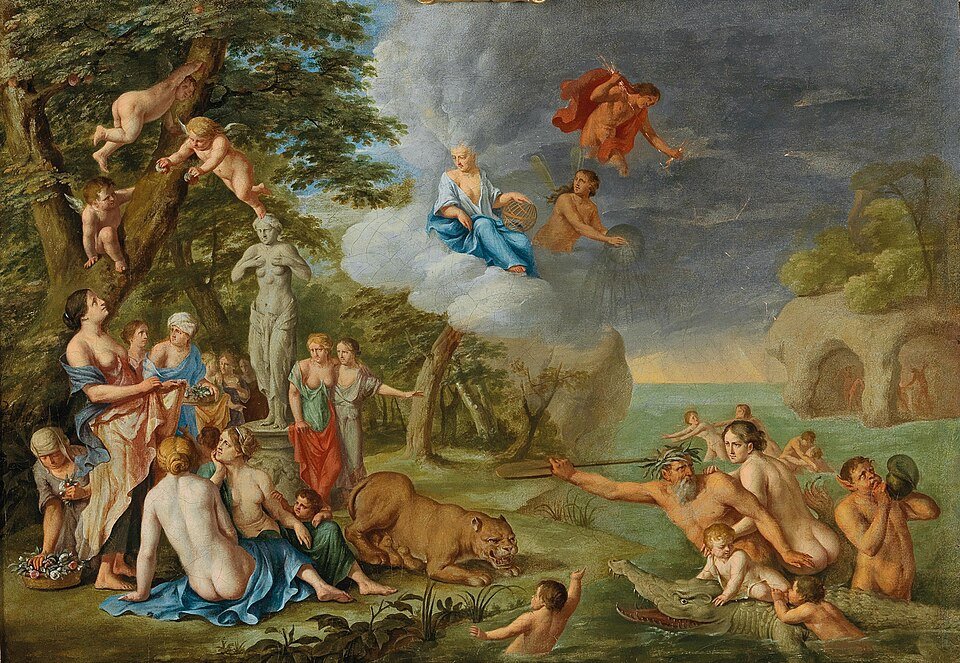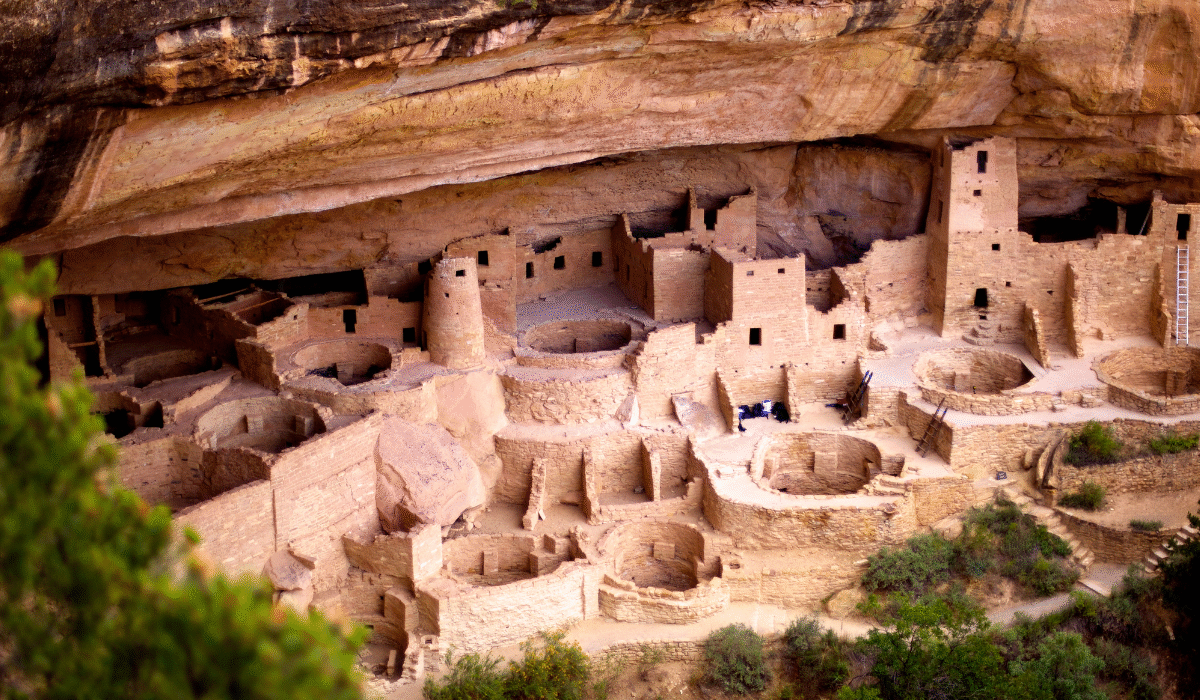High on a sun-drenched hill in southeastern Turkey lies a monument that defies every assumption we’ve ever made about early human civilization. Göbekli Tepe—meaning “Potbelly Hill” in Turkish—is not just the oldest known temple complex in the world. It is an architectural feat so advanced, so unexpected, and so profoundly mysterious that it has rewritten the history of humanity’s origins. Before the pyramids of Egypt, before Stonehenge rose in England, even before the earliest cities took shape—there was Göbekli Tepe.
Dating back to as early as 9600 BCE, this prehistoric wonder challenges the very idea of who our ancestors were and what they were capable of. The builders of Göbekli Tepe lived in a world without metal tools, writing systems, domesticated animals, or agriculture as we understand it. They were supposed to be primitive—nomadic hunter-gatherers eking out a living from a wild landscape. Yet what they left behind is a stunning arrangement of massive T-shaped stone pillars, some over 20 feet tall and weighing more than 20 tons, elaborately carved with images of animals, abstract symbols, and eerie humanoid forms.
How, then, did such a complex structure come to be—so early in our history? Who were these enigmatic builders? Were they simply more advanced than we ever imagined, or is there something even more mysterious at play?
This is the story of Göbekli Tepe—and the mystery of who really built it.
Discovery and Initial Shock: The Find That Shook the World
The story of Göbekli Tepe’s discovery begins in 1963, when a joint team from the University of Istanbul and the University of Chicago conducted a survey of the region. At the time, the hill appeared unremarkable—just another mound among many in the area. The team noted some loose flint artifacts and a few stone fragments but dismissed the site as insignificant.
That would have been the end of it—if not for Klaus Schmidt, a German archaeologist who returned to the site in 1994. As he began to excavate, Schmidt realized that the stones poking out of the hill were not natural formations but the tops of something much grander. He was uncovering the oldest monumental architecture ever found, predating even the wheel by thousands of years.
The radiocarbon dates came back: some of the structures were nearly 12,000 years old. Schmidt understood immediately what this meant—it was a moment that would forever change our understanding of human prehistory.
Göbekli Tepe wasn’t built by farmers or city dwellers. It was built by people who had not yet developed writing or agriculture. Yet they had moved mountains—quite literally.
The Builders: Nomadic Hunters or Forgotten Civilization?
The standard narrative of human development says that complex societies arose only after the agricultural revolution. People settled down, started farming, formed communities, and gradually developed religion, art, and architecture. Göbekli Tepe flips that timeline on its head.
The builders were presumed to be hunter-gatherers, living in small, mobile bands. But what nomadic society invests immense labor in hauling 20-ton stones uphill, carving intricate reliefs into them, and arranging them in precisely aligned circles?
There are two ways to reconcile this contradiction.
One theory is that religion and ritual spurred the creation of Göbekli Tepe—that spirituality came before the plow. These early people may have gathered seasonally at the site for ceremonies. The need to support these gatherings could have led to innovations in agriculture and social organization, suggesting that complex belief systems may have been the catalyst for civilization, not the product of it.
The second theory, more radical and controversial, suggests we’re missing an entire chapter of history. Perhaps Göbekli Tepe was built by a lost civilization, one more advanced than we’ve believed possible for the era. Could these people have possessed forgotten knowledge or techniques that allowed them to shape stone and organize labor in ways we still don’t understand?
No human remains have yet been found at the site. No homes, no tools, no burial grounds. Just the megaliths, standing like silent sentinels in the dust.
Engineering the Impossible: How Did They Do It?
Even with modern technology, moving and erecting 20-ton limestone pillars would require significant planning and machinery. Yet the builders of Göbekli Tepe had no wheels, no cranes, no pack animals. So how did they do it?
Some researchers believe the stones were carved from local quarries using flint tools. The massive pillars were likely transported by dragging them over logs or sleds—though how they managed this over hilly terrain remains unclear. Ramps, levers, and ropes might have been used to maneuver the stones into place.
But the deeper mystery lies not in how they moved the stones—but why they built them at all.
These were not shelters or dwellings. The enclosures served no utilitarian purpose. The carvings—foxes, snakes, vultures, scorpions—suggest a complex symbolic system, possibly religious. Some experts believe the pillars represent gods or ancestors, while others see them as totems connected to celestial events. The layout of the enclosures hints at astronomical alignments, possibly mapping the stars or seasons.
Whoever these builders were, they had not only technical ability but also cultural depth, a worldview rich with meaning, myth, and mystery.
The Enigmatic Art: Symbolism Beyond Time
The art of Göbekli Tepe is astonishing—not just for its age but for its sophistication. The stone pillars are adorned with reliefs of animals, some in motion, some locked in battle. There are abstract symbols, including the iconic “H” shape, as well as scenes that appear to tell stories.
One particularly haunting image shows a headless human figure, possibly falling. Nearby, vultures stretch their wings. Could this be a reference to death, rebirth, or a now-forgotten ritual?
Some scholars point to parallels between these carvings and those found in later Sumerian, Hittite, and even Egyptian art. Is it possible that the symbols of Göbekli Tepe were the ancestral roots of mythology itself? If so, then this place wasn’t just a temple—it was the cradle of human imagination.
Others have proposed more esoteric theories. Some believe the site encodes astronomical knowledge. A team of researchers has argued that the arrangement of the pillars represents the constellations as they appeared nearly 13,000 years ago, possibly marking the date of a catastrophic event such as a comet impact.
Still, the true meaning of the art remains elusive, locked in stone by a people who left no written language behind.
Burial or Preservation? The Puzzle of Göbekli Tepe’s Backfilling
One of the most bizarre features of Göbekli Tepe is that it was deliberately buried. After thousands of years of use, the enclosures were filled in with rubble and earth—intentionally, methodically, as if to preserve them for the future.
Why would the builders go to such lengths to bury their sacred site?
Some believe it was a ritual closure—perhaps the builders moved on or experienced a cultural transformation. Others think it may have been a response to an environmental crisis. There are signs that the region suffered from a rapid climate shift, possibly related to the end of the last Ice Age.
More speculative theories abound. Could it be that the site was buried to hide it from invaders or protect sacred knowledge? Was it a time capsule, meant to be uncovered by a future generation?
Whatever the reason, the backfilling preserved the site in remarkable condition, allowing us to rediscover it more than 10,000 years later.
Beyond Göbekli Tepe: A Network of Sacred Sites?
As researchers expanded their surveys of the region, they made a stunning discovery. Göbekli Tepe was not alone.
Nearby sites like Karahantepe, Nevalı Çori, and Çayönü feature similar T-shaped pillars and stone enclosures, suggesting a wider cultural complex. These sites are still being excavated, but early findings indicate that Göbekli Tepe may have been just one node in a network of early sacred centers.
This raises a fascinating possibility: were these sites part of a unified spiritual or cultural tradition—one that spread across the Fertile Crescent, predating all known civilizations?
If so, then Göbekli Tepe was not an anomaly—it was a beacon, the spiritual heart of a lost culture that once thrived before history began.
Theories and Speculation: Lost Civilizations, Ancient Astronauts, and More
The mysteries of Göbekli Tepe have inspired a host of theories—some scholarly, others far more speculative.
Some researchers suggest that the builders were survivors of a forgotten civilization that perished in the upheavals of the Younger Dryas—a period of abrupt climate change around 10,800 BCE. Could a group of refugees have carried with them the knowledge to build megaliths and sacred centers?
Others invoke more unorthodox ideas. Proponents of the ancient astronaut hypothesis argue that Göbekli Tepe’s sudden complexity and astronomical alignments suggest extraterrestrial influence. While mainstream archaeology dismisses these claims, the very fact that the site defies explanation invites all manner of speculation.
Still others look for answers in mythology. They see echoes of Eden, Atlantis, or the Sumerian gods in the stone pillars of Göbekli Tepe. Could the builders be the inspiration for the stories of the “first men,” “gods,” or “watchers” found in ancient texts?
No definitive answers exist. Göbekli Tepe remains, at its heart, a riddle carved in stone.
Conclusion: A Mirror Into Our Forgotten Past
Göbekli Tepe is not just the oldest known temple in the world—it is a window into a forgotten era, a time when humanity stood on the threshold between the wild and the civilized, between survival and meaning, between nature and the divine.
It challenges our assumptions, rewrites our timelines, and forces us to ask questions that shake the foundations of archaeology, history, and belief. Who built it? Why did they do it? And what legacy did they leave behind?
We may never know the full truth. But perhaps that is the greatest gift of Göbekli Tepe—it invites us not just to find answers, but to wonder. To imagine. To explore.
And in doing so, it reminds us that the human story is far older, deeper, and more mysterious than we ever dared to believe.






